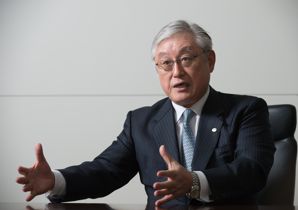TOKYO – The relationship between M & A and “crisis management” went under the spotlight in corporate Japan. The latest statistics have shown yet another record for mergers and acquisitions: the novelty is that this year the main “driver” of this trend has been the strategic external focus, but just the “crisis management.” The most critical business decision – those of yielding asset or less (also strategic, even the most profitable) – was dictated several times by exceptional situations that occurred mostly because of the emergence of scandals, in turn related to deficiencies evident in governance.

The external members of the board change the Corporate Japan. But not too
In the first five months of 2016 announced acquisitions involving niponiche companies jumped by 62% to a value equivalent to 55.4 billion dollars, the highest in a decade. In the front row was Toshiba, which had to give many activities after the scandal of rigged budgets for several years: the sale to Canon for about $ 6 billion in the medical sector was the equivalent of separate from the crown jewel. tremendous strategic decision – together with other supplies of lower profile – which shows that the crisis at Toshiba has been dramatic.
And certainly Mitsubishi Motors would not have agreed – at least not so quickly – to find in the Nissan its new shareholder, with 34% if it had not stumbled in the accident rigged tests on the efficiency of the engines.
in the “crisis management” options available to the top executive shrink to questions that would never wanted to deal: give up non-core assets and unprofitable (but knowing tick inadequate prices) or sell the best activities to maximize the price? Choose or not a partner that puts at risk the company’s independence? Or throw in the towel and give up all of its independence, as did Sharp selling yourself to the Taiwanese Foxconn?

The CEO of Hitachi: “The future goes by the management reform”
Several analysts point to the sharp increase in M & amp agreements; A aimed at responding to corporate emergencies: a trend that could to continue in the near future, especially in areas which are experiencing more intense competition on a global scale, or they face the consequences of scandals.
the future of Takata, for example, is not clear, although the company producing potentially faulty airbags (with consequent references to the workshop of many millions of vehicles) is doing everything possible to try to keep its autonomy. Toshiba itself might be forced to sell another division. Nissan Motor, possibly to finance the purchase of the stake in Mitsubishi Motors has decided to sell its stake in Calsonic Kansei.
For many years, the M & A Japanese appeared above all “offensive” with large acquisitions of foreign companies. Now appears more the result of a combination between strategic decisions of aggressive and defensive management choices. When selling assets or equity shares, the choice of timing as well as the individual assets (the best or the worst) is always crucial. The problem is that when the time and manner are dictated by the emergency may lead to serious errors.
“Line Corp will go on the Stock Exchange in mid-July in Tokyo and New York with a value of $ 5.5 billion: two years ago the assessment was to ten billion “
But it is not always and so the line between boldness and calculated caution, at times, is not very clear. Take the case of what is emerging as Japan’s largest IPO this year, that of Line Corp that will go on the Stock Exchange in mid-July in Tokyo and in New York. The management of the company’s messaging app (with its shareholder Naver) has decided to sell to the market almost a fifth of the capital to fund further expansion in international markets. But it was slow for a couple of years to do so than the initial hypothesis: the group is now estimated at $ 5.5 billion. Not bad for a company founded five years ago, but much less than the $ 10 billion of which had been talked about in 2014, before the investors become less enthusiastic about technological IPO and before other rival groups accelerassero their strategies.
© All rights reserved
No comments:
Post a Comment